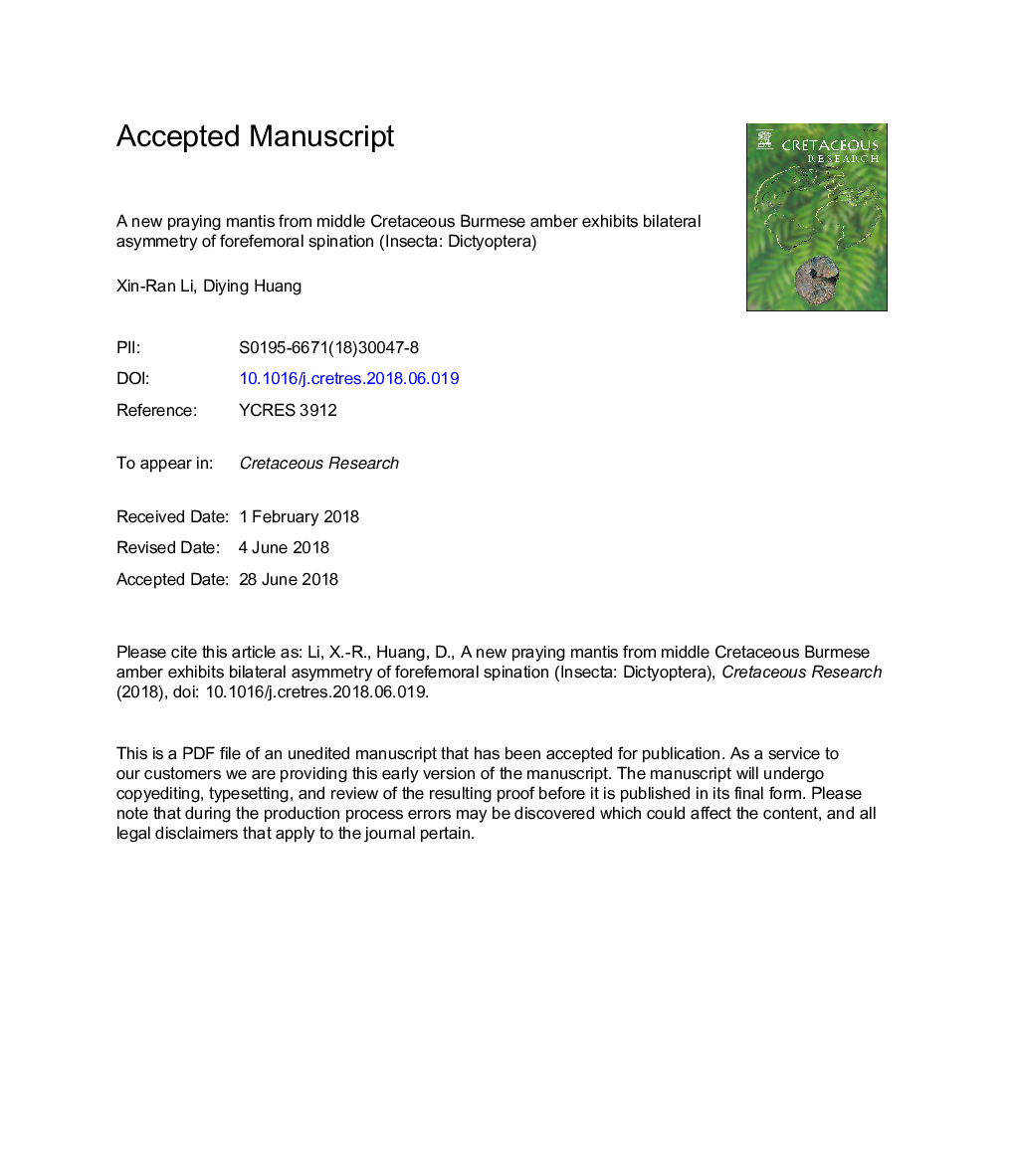| Article ID | Journal | Published Year | Pages | File Type |
|---|---|---|---|---|
| 8916186 | Cretaceous Research | 2018 | 12 Pages |
Abstract
Here we describe a new praying mantis species, Burmantis hexispinea sp. nov., from middle Cretaceous Burmese amber. The new species differs from other species of Burmantis in the forefemoral spination with six large spines, instead of five. Although not the first adult of Burmantis, the holotype provides exclusive adult morphology of this genus: the wing venation is typical of Mantodea, and male terminalia are symmetrical or nearly symmetrical, with long cerci and styli. The holotype exhibits intraspecific variation in the forefemoral spination between the leg pair, and this suggests caution when proposing new taxa based on such characters.
Related Topics
Physical Sciences and Engineering
Earth and Planetary Sciences
Palaeontology
Authors
Xin-Ran Li, Diying Huang,
